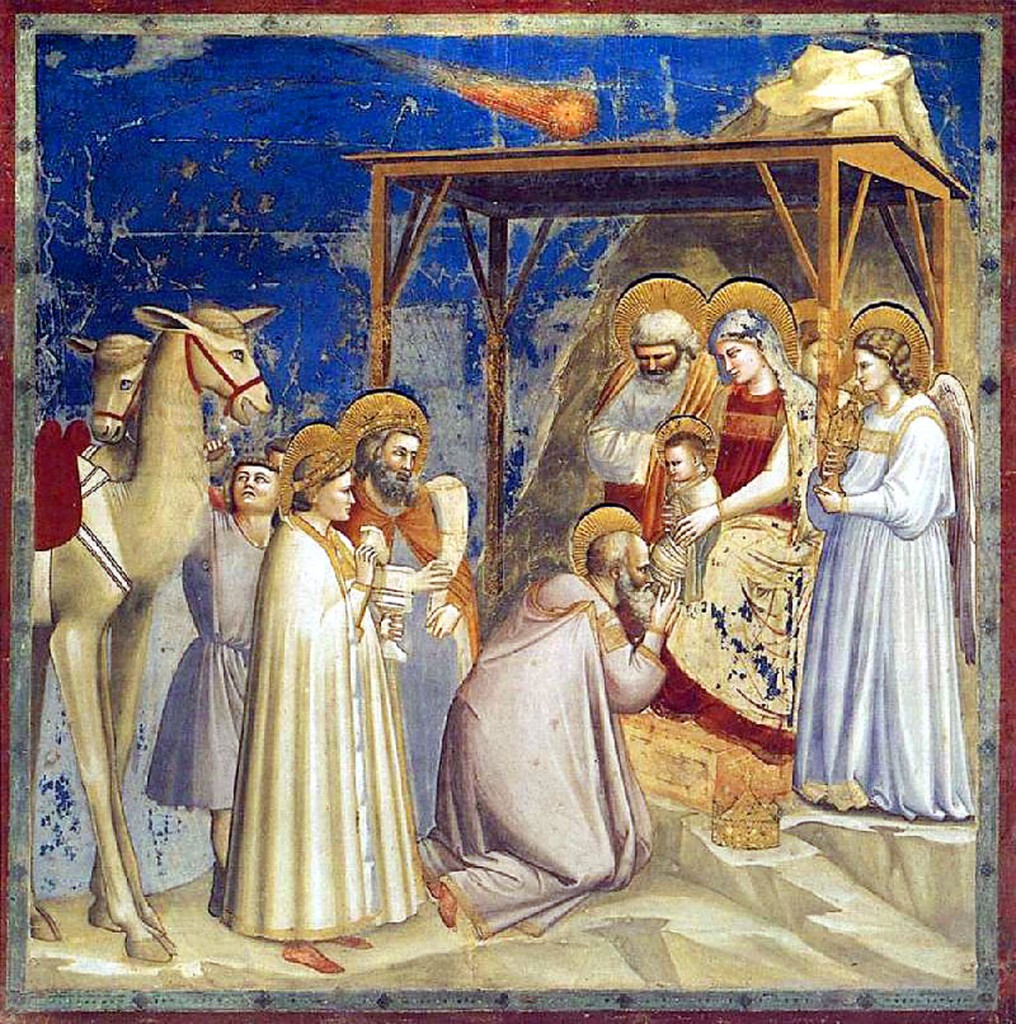
Christmas Oratorio in brief
By Michel Khalifa
Six separate pieces of music intended to be performed on different days in the church service, in between the reading from the Gospels and the sermon of the day. But then collected in a single score under one title. That – in brief – is Bach’s Christmas Oratorio.
The six cantatas were performed separately on six different days between 25 December 1734 and 6 January 1735, in the churches of St Thomas and St Nicholas, in Leipzig. Each cantata belonged to a specific feast day in the period between Christmas Day and Epiphany, or the Birth and the Revelation of the Lord.
From secular to spiritual
As the ‘court composer’ in Dresden, Bach presented the court with various compositions, including three cantatas in honour of the Elector and his family: Hercules auf der Scheidewege, BWV 213, Tönet, ihr Pauken! Erschallet,Trompeten!, BWV 214 and Preise dein Glücke, gesegnetes Sachsen, BWV 215. He reused these occasional pieces in 1734 for the feast of Christmas in Leipzig. The choice was understandable, partly because the new target group of the congregations of the churches of St Thomas and St Nicholas was much broader than the noble audience in Dresden. Moreover the music could be used more often in a spiritual form. And from an emotional point of view, there was surprisingly little difference between odes to powerful rulers and odes to the king of kings. After all, kinghood was a gift from God.
Old and new
Most of the arias and choral sections in the Christmas Oratorio come from the three cantatas mentioned above, though with different words, of course. The remarkably rich chorales – four-part settings of existing hymns – were new compositions by Bach. The same applies to the recitatives, of which there are two types. Those with words from the Bible are recited by an Evangelist (tenor), like in the Passions, and have simple continuo accompaniment. The recitatives with new words are accompanied by instruments from the orchestra as well as by the continuo.
Cycle
The umbrella title of ‘Christmas oratorio’ for this six-part cycle was chosen by Bach himself. Another indication that he designed the six cantatas as an entity is the clear tonal planning, in the keys of D-G-D-F-A-D respectively (D major was excellently suited to trumpets). Other clues are the cohesion and symmetry of the instrumentation, with a main role for sonorous wind instruments, and the continuous storyline. Faithful members of the congregation will undoubtedly have frowned on the latter point. In their choice of biblical texts, Bach and his unknown librettist – probably Christian Friedrich Henrici alias Picander, who also compiled the libretto for the St Matthew Passion – repeatedly deviated from the reading of the Gospels that was actually associated with the church service concerned.

THE FIRST THREE CANTATAS FURTHER DETAILS
I Jauchzet, frohlocket, auf, preiset die Tage
The cantata for Christmas Day revolves around the birth of Jesus. The mix of chorale, arioso and recitative in ‘Er ist auf Erden kommen arm’ is striking. The soprano sings the balanced chorale melody with almost sublime serenity, while the bass gives a stirring rendition of the emotions of a believer. In the closing chorale, trumpets and timpani lend extra weight to the pietistic chorale text ‘Ach, mein herzliebes Jesulein’.
II Und es waren Hirten in derselben Gegend
On the second day of Christmas, when the focus is on the shepherds, Bach opens with an instrumental section. He uses no fewer than four instruments from the oboe family, in order to evoke the rustic scene. The mood alternates between contemplative, as in the alto aria ‘Schlafe, mein Liebster’, and exuberant, as in the angels’ jubilant singing of the Gloria ‘Ehre sei Gott in der Höhe!’.
III Herrscher des Himmels, erhöre das Lallen
In the third cantata, the trumpets and timpani return. The emotional highlight is in the alto aria with violin accompaniment ‘Schliesse, mein Herze, dies selige Wunder’, in which the Virgin Mary reflects on the wonder that has befallen her. Another central theme is the quest of the shepherds. There is not a trace of the official reading for the third day of Christmas, the opening of the Gospel of John. This text is therefore more abstract than narrative.